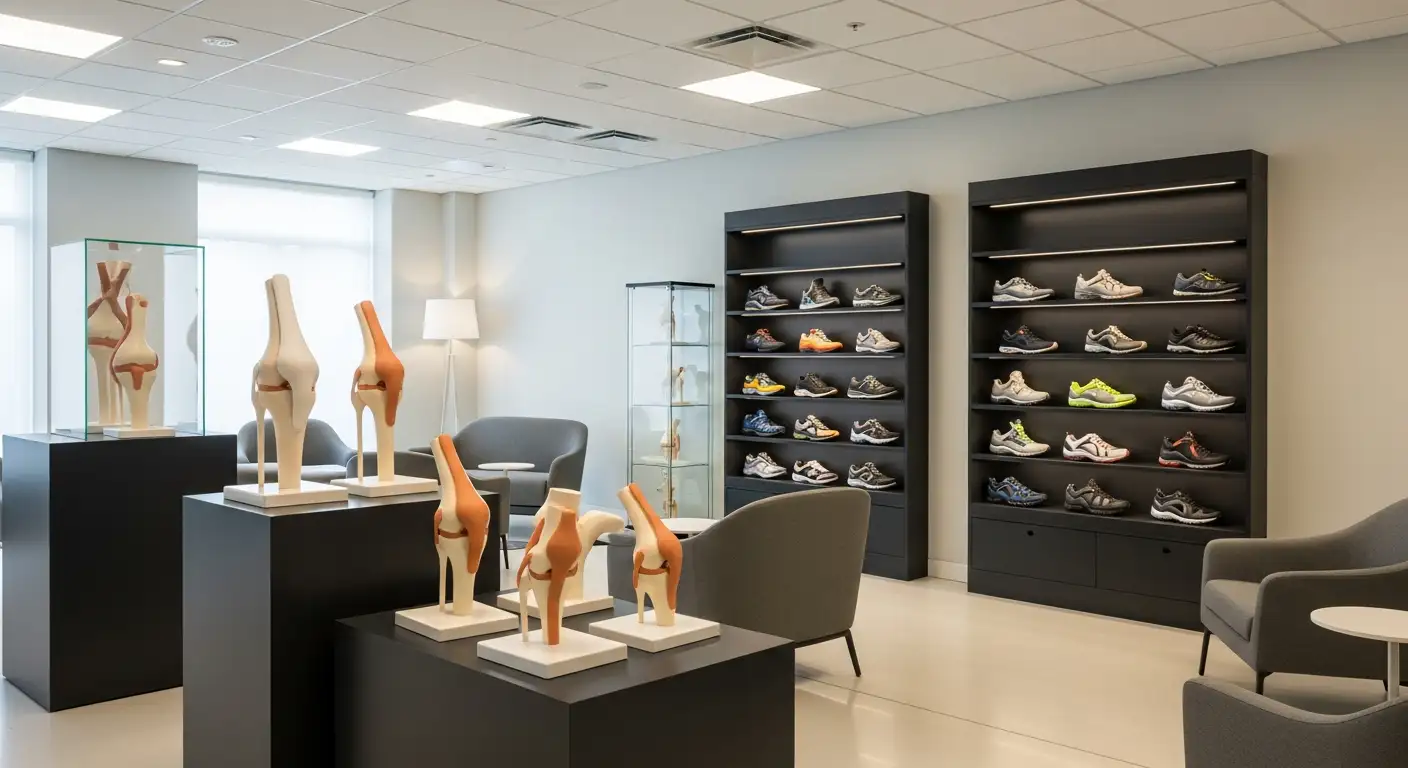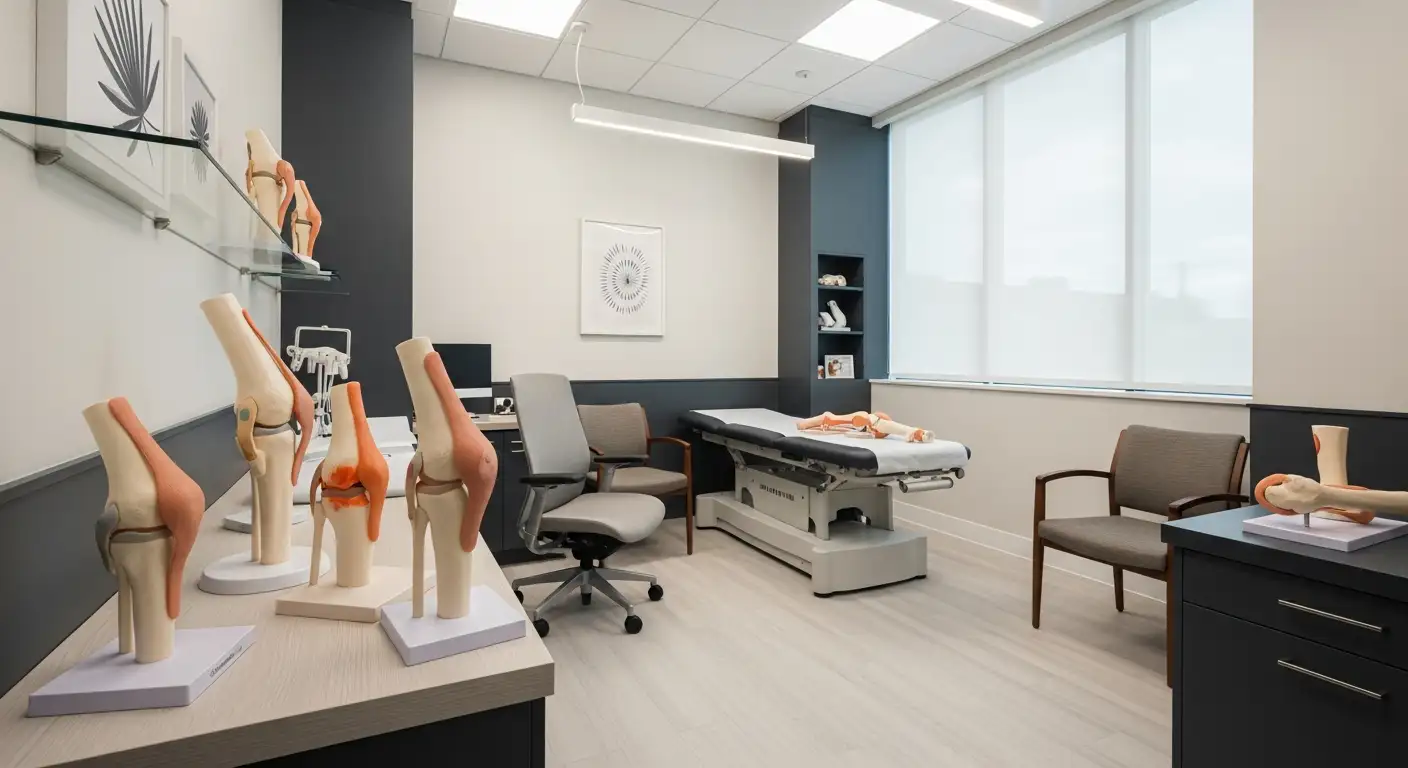Understanding Vastus Lateralis
A thorough understanding of the vastus lateralis muscle is essential when addressing knee pain. This section explores its anatomy and function, shedding light on its importance in the overall mechanics of the knee.

Anatomy of Vastus Lateralis
The vastus lateralis is the largest component of the quadriceps femoris muscle group. It is located on the outer side of the thigh and plays a crucial role in knee movement. Key anatomical points include:
Here is a summary table of the vastus lateralis anatomy:
FeatureDetailsOriginUpper intertrochanteric line, greater trochanter, linea asperaInsertionLateral quadriceps tendon to tibial tubercleInnervationFemoral nerve (L2-L4)Blood SupplyLateral circumflex femoral arteryFunctionKnee extension, stabilization of the knee joint
Function of Vastus Lateralis
The primary function of the vastus lateralis is to extend the knee. It is the strongest member of the quadriceps group, contributing approximately 40% of the overall strength needed for knee extension [1]. The muscle operates by harmonizing with the other quadriceps muscles, including the rectus femoris, vastus medialis, and vastus intermedius, to ensure smooth and effective knee motion.
Imbalances between the vastus lateralis and vastus medialis can lead to abnormal patellar movement, resulting in pain and instability in the knee joint. Understanding these aspects of the vastus lateralis is essential for implementing effective stretching techniques, such as the vastus lateralis stretch to mitigate knee discomfort and improve joint function.
Regular stretching and strength training focused on this muscle can help alleviate symptoms related to knee pain, ensuring better functional outcomes for individuals experiencing discomfort. For resources on related issues, consider exploring articles on quadriceps tendinitis or knee flexion and extension.
Vastus Lateralis Strain
Symptoms of Strain
A strain of the vastus lateralis can lead to various symptoms that may affect an individual's ability to perform daily activities. Common signs include:
SymptomDescriptionAnterior Knee PainDiscomfort located at the front of the knee, often exacerbated by activities such as running, stair climbing, or jumping.Pain During Prolonged SittingIndividuals may experience increased discomfort when sitting with the knees flexed for extended periods.Muscle TightnessA sensation of tightness or stiffness in the thigh muscles, particularly after periods of inactivity.SwellingInflammation may occur around the knee joint, contributing to discomfort.Sharp PainLess common, but may occur during stretching exercises or activities that require sudden movements [2].
Individuals who experience these symptoms should pay attention to their body's signals to ensure proper technique during exercises, especially while performing a vastus lateralis stretch.
Management and Prevention
Management of a vastus lateralis strain typically follows the RICE protocol, which includes:
In preventing future strains or injuries, individuals should consider the following:
Prevention StrategyDescriptionStretching and Myofascial ReleaseEngaging in regular stretching routines and myofascial release techniques to promote flexibility and reduce tightness [3].Gradual Progression of ActivitiesIncorporating exercises progressively to strengthen the vastus lateralis without overexertion.Proper Technique in ExercisesEnsuring correct technique in all physical activities to mitigate risks.
Monitoring the intensity of exercises, maintaining mobility, and ensuring sufficient hydration and nutrition are additional strategies that can support the overall health of the knee and prevent further complications related to conditions like quadriceps tendinitis. Adopting these practices can lead to improved knee function and better overall outcomes for those experiencing knee pain.
Role in Knee Pain
Association with Patellofemoral Pain Syndrome
Vastus lateralis strain can be closely associated with patellofemoral pain syndrome (PFPS). This condition is often characterized by anterior knee pain, which can occur while sitting, running, stair climbing, or jumping. In some cases, symptoms may develop over a year before an acute strain occurs. Understanding the dynamics of knee biomechanics is essential when addressing pain and injury in this area. For more details, refer to the report of cases on PubMed.
In individuals with PFPS, the vastus lateralis—part of the quadriceps muscle group—may begin to contract prematurely compared to its counterpart, the vastus medialis. This imbalance can potentially lead to discomfort and pain in the knee joint [4]. Addressing this imbalance is vital for managing knee issues effectively.
Contractions and Knee Pain
The timing of the vastus lateralis contraction is critical in influencing knee pain. Research has shown that the muscle can contract earlier than the vastus medialis in certain individuals with PFPS. This premature activation may lead to misalignment of patellar tracking during movement, causing increased stress on the knee joint and contributing to pain.
Recent studies indicate that even healthy individuals may experience uneven timing in muscle activity between the vastus lateralis and vastus medialis, suggesting that while the relationship exists, it may not be as straightforward as previously thought [4]. Understanding these dynamics is essential for developing targeted treatment plans, including exercises and stretches. Incorporating a regular routine of stretches, such as the vastus lateralis stretch, can help alleviate some of the strain and improve overall knee health.
Ensuring a strong and balanced quadriceps muscle group is instrumental in maintaining knee stability and function. Regular assessment and stretching can greatly enhance muscle coordination and reduce the risks of knee pain associated with various activities.
Stretching Techniques
Understanding how to effectively stretch the vastus lateralis is essential for knee health. This section focuses on the benefits of quadriceps stretching and provides various stretches aimed specifically at this muscle.
Quadriceps Stretching Benefits
Stretching the quadriceps, including the vastus lateralis, offers multiple benefits including:
Stretching not only supports better physical abilities but also promotes overall well-being, especially for those dealing with knee pain.
Top Vastus Lateralis Stretches
Here are some effective stretches for targeting the vastus lateralis muscle:
Stretch TypeDescriptionStanding Quad StretchStand on one foot and pull the opposite foot towards the glutes. Hold for 20-30 seconds, focusing on keeping your knees aligned.Kneeling Quad StretchKneel on one knee, with the other foot in front. Push your hips forward and grab the ankle of the back leg, bringing it towards the glutes. Hold for 20-30 seconds.Side Lunge StretchStep to the side into a lunge position with one leg extended and the other bent. Shift your weight toward the bent leg, feeling the stretch in the inner thigh and quadriceps. Hold for 20-30 seconds on each side.Sitting Quad StretchSit on the floor with one leg extended straight. Bend the other knee and place the foot near the glutes. Lean back slightly and hold for 20-30 seconds, feeling the stretch in your quadriceps.
These stretches can help maintain the flexibility of the vastus lateralis and reduce the risk of knee pain. Integrating these techniques into a regular fitness routine will support both mobility and strength in the knee joint. Ensure proper form and technique, and consult a professional if unsure about how to execute these stretches safely. For additional exercises and recovery strategies, explore our resources on quadriceps tendinitis and related knee pain treatments.
Stretching Guidelines
When performing a vastus lateralis stretch, following proper form and technique is essential for maximizing benefits and minimizing the risk of injury. Additionally, knowing how to modify and adapt these stretches can help meet individual needs.
Proper Form and Technique
To effectively stretch the quadriceps muscles, the following steps should be followed:
This positioning not only stretches the vastus lateralis effectively but also enhances mobility, flexibility, and range of motion in the knee and hip joints. Stretching can reduce musculoskeletal pain in the knees and lower back, lower the risk of injuries, and improve overall physical activity abilities such as walking and biking [5].
Key PointsDetailsStretch TypeQuadriceps StretchTarget MuscleVastus LateralisRecommended Duration15-30 secondsRepetitions2-3 times for each leg
Modifications and Variations
Individuals can customize quad stretches to better suit their abilities and comfort levels. Here are some options for modification:
For a basic quad stretch, the individual should perform the following movements while keeping the proper form established earlier. It's important that stretches shouldn't be painful; they may feel slightly uncomfortable but should not cause pain. Adjusting the depth of the stretch is essential to meet personal limits [5]. Listening to the body and gradually increasing stretch intensity can prevent injury and aid in the recovery and flexibility of the vastus lateralis.
For further insights on knee health, individuals can explore topics related to quadriceps tendinitis and proper care using a neoprene knee brace.
Recovery Strategies
Recovery after performing a vastus lateralis stretch is essential to ensure optimal muscle function and prevent injuries. The following strategies can enhance recovery and help monitor any complications that may arise.
Post-Stretching Recovery
The recovery process following vastus lateralis stretching exercises typically takes between 24 to 72 hours, depending on the intensity of the workout and individual fitness levels. Key recovery strategies include:
Recovery StrategyDescriptionActive RecoveryEngaging in light activities such as walking or gentle cycling to promote blood flow without stressing the muscles.Adequate HydrationDrinking plenty of fluids to stay hydrated, which aids in muscle repair and overall recovery.Proper NutritionConsuming a balanced diet rich in protein and nutrients to support muscle healing.RestAllowing for sufficient rest to let the muscles recover fully before engaging in strenuous activities again.
These strategies can help manage muscle soreness, strains, or tears that may occur during the recovery period following stretches. It’s important to stay aware of one’s body and rest if pain or discomfort arises.
Monitoring and Preventing Complications
During the recovery timeline, monitoring for potential complications is crucial. Individuals should be aware of any signs of muscle soreness or strains, as these can indicate overexertion or improper technique during stretching. If complications arise, strategies to minimize risks include:
Keeping an eye on symptoms during recovery, including swelling or discomfort, can help in effectively managing potential complications. For more insights on knee health and related issues, consider checking articles on quadriceps tendinitis and knee flexion and extension.
References
[2]:
[3]:
[4]:
[5]:





